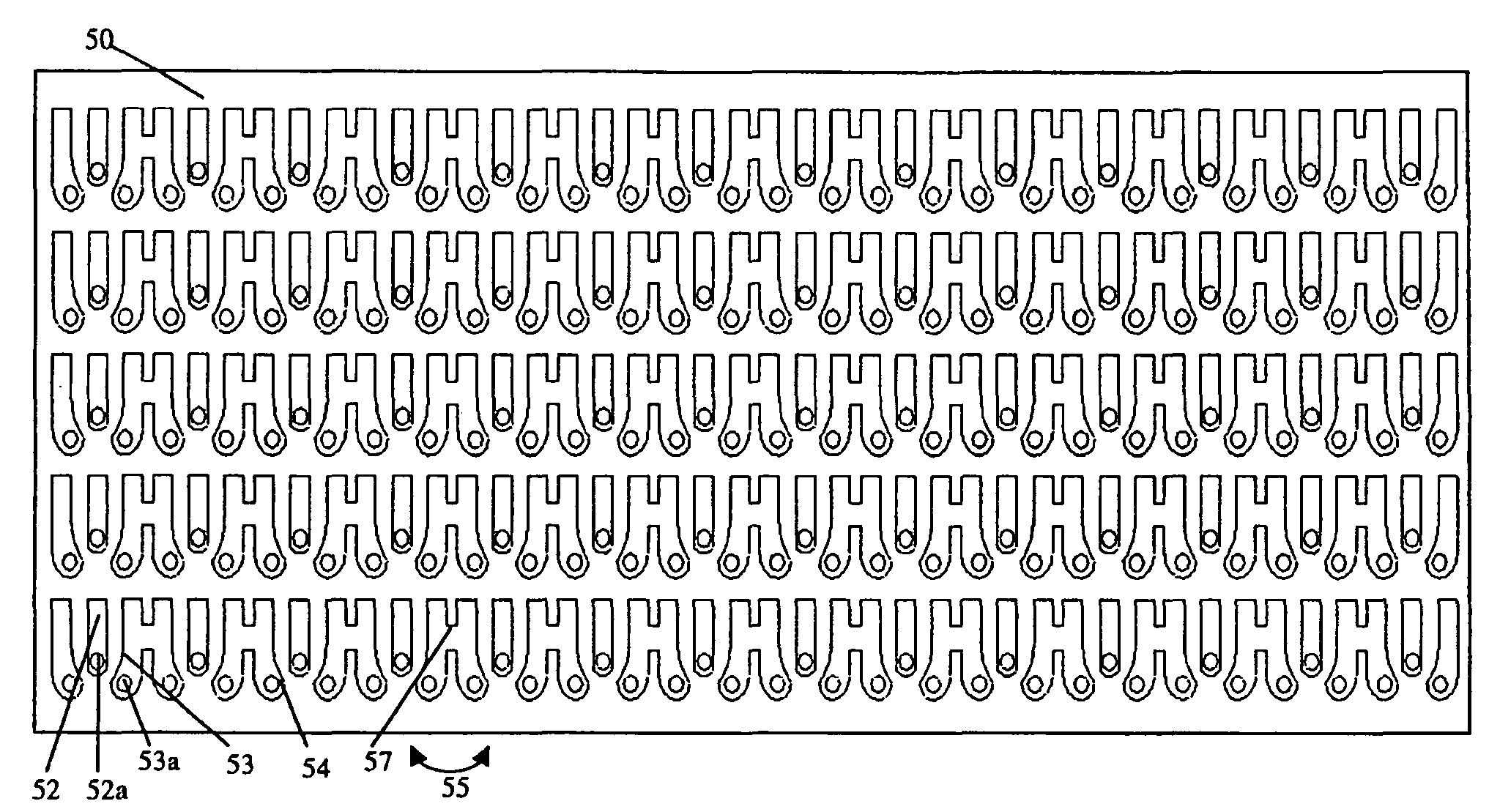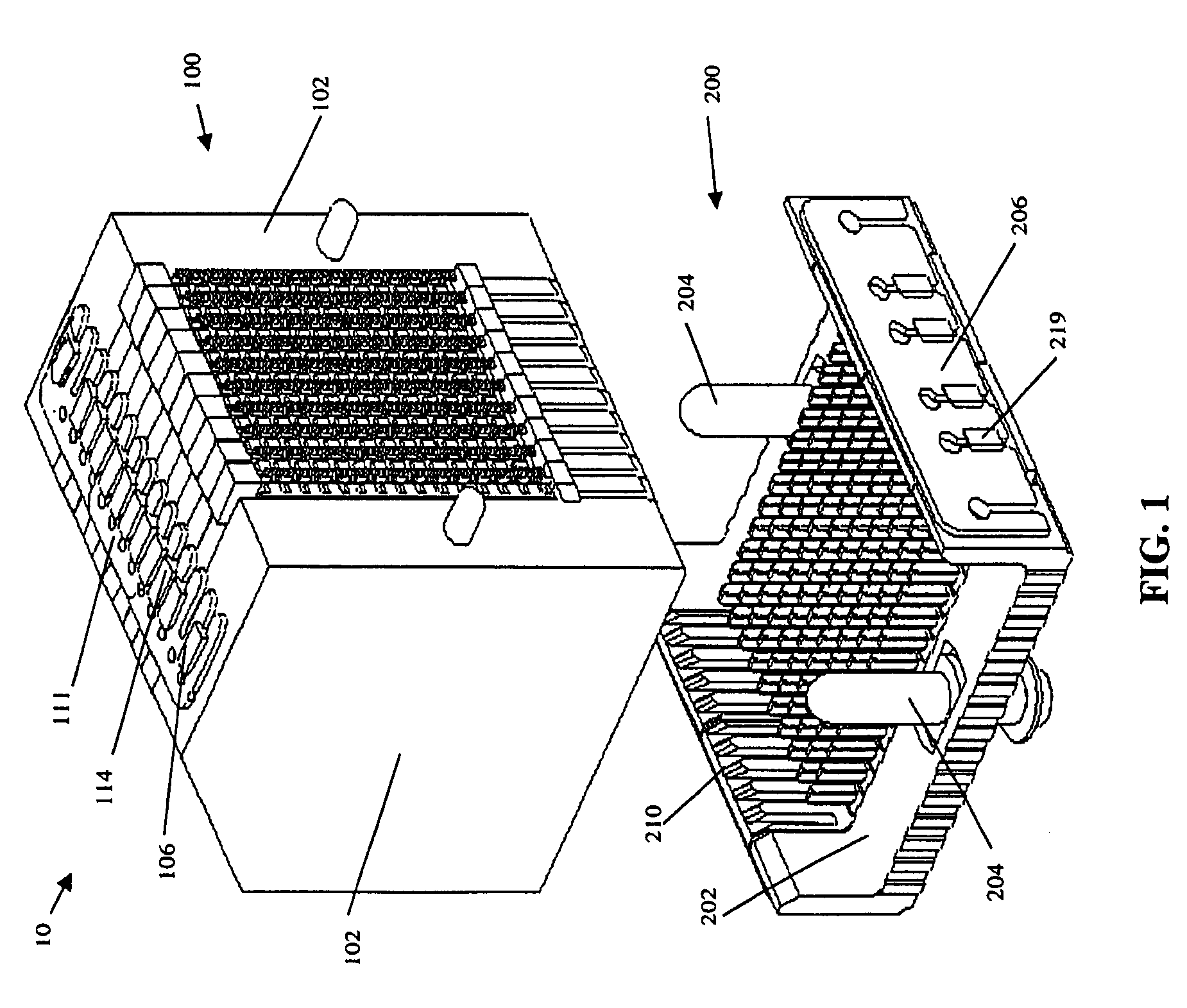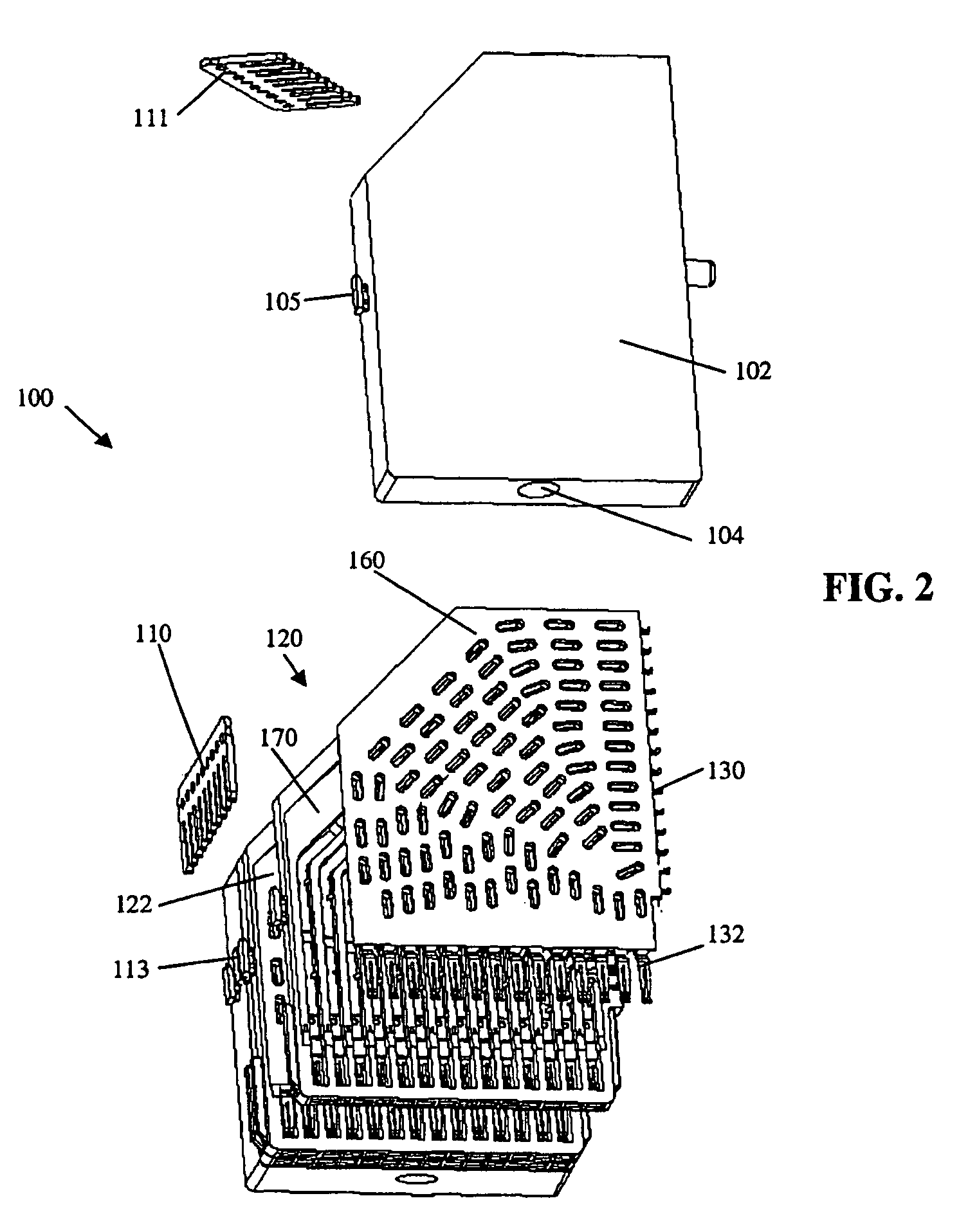Printed circuit board for high speed, high density electrical connector with improved cross-talk minimization, attenuation and impedance mismatch characteristics
a high-density, electrical connector technology, applied in the direction of insulated conductors, coupling device connections, cables, etc., can solve the problems of reducing the use of single-ended signals in the system, reducing the possibility of electrical noise generated in the connector, and presenting a significant limitation on single-ended signal us
- Summary
- Abstract
- Description
- Claims
- Application Information
AI Technical Summary
Problems solved by technology
Method used
Image
Examples
Embodiment Construction
[0035]Referring to FIG. 1, there is shown an electrical connector assembly in accordance with an embodiment of the present invention. The electrical connector assembly 10 includes a first electrical connector 100 mateable to a second electrical connector 200.
[0036]The first electrical connector 100, which is shown in greater detail in FIGS. 2–8b, includes a plurality of wafers 120, with each of the plurality of wafers 120 having an insulative housing 122, a plurality of signal conductors 124 (see FIG. 3) and a plurality of shield strips 126 (see FIGS. 5a and 5b). For exemplary purposes only, the first electrical connector 100 is illustrated with ten wafers 120, with each wafer 120 having fourteen single-ended signal conductors 124 and corresponding fourteen shield strips 126. However, as it will become apparent later, the number of wafers and the number of signal conductors and shield strips in each wafer may be varied as desired.
[0037]The first electrical connector 100 is also show...
PUM
 Login to View More
Login to View More Abstract
Description
Claims
Application Information
 Login to View More
Login to View More - R&D
- Intellectual Property
- Life Sciences
- Materials
- Tech Scout
- Unparalleled Data Quality
- Higher Quality Content
- 60% Fewer Hallucinations
Browse by: Latest US Patents, China's latest patents, Technical Efficacy Thesaurus, Application Domain, Technology Topic, Popular Technical Reports.
© 2025 PatSnap. All rights reserved.Legal|Privacy policy|Modern Slavery Act Transparency Statement|Sitemap|About US| Contact US: help@patsnap.com



